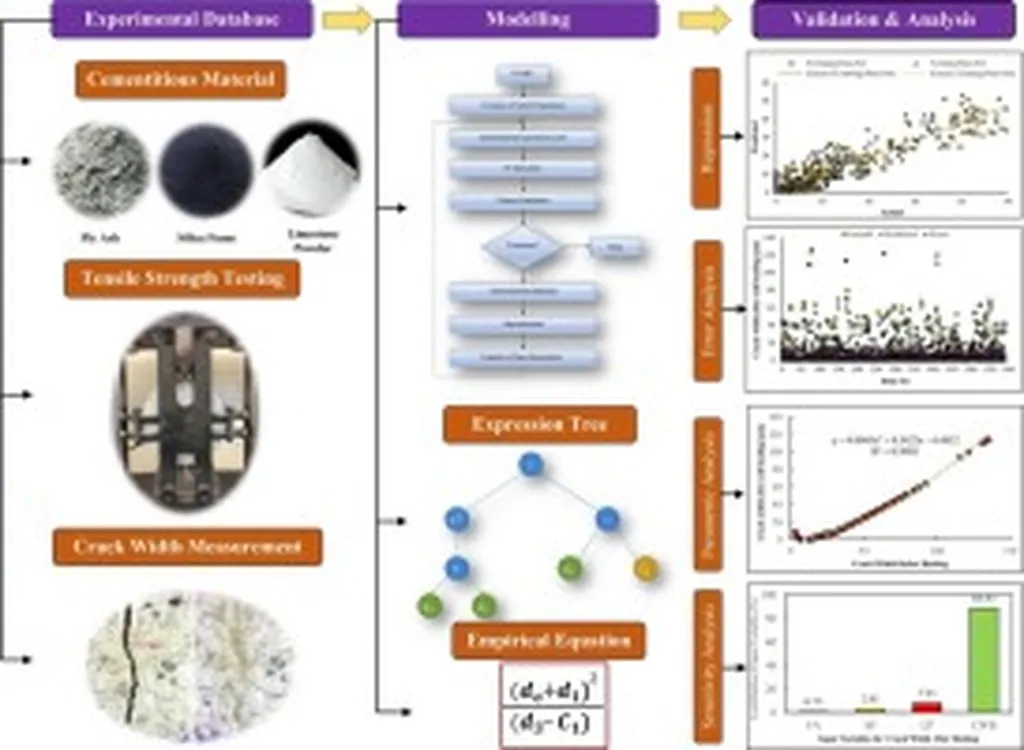In the ever-evolving world of construction materials and techniques, a groundbreaking study led by Omid Habibi from Concordia University’s Department of Building, Civil and Environmental Engineering is set to revolutionize how we predict and manage crack widths in glass fiber-reinforced polymer (GFRP)-reinforced concrete (RC) structures. Published in the journal “Case Studies in Construction Materials” (translated as “Case Studies in Building Materials”), this research harnesses the power of machine learning (ML) to enhance the accuracy of crack width predictions, a critical factor in the durability and longevity of RC structures.
Crack width control is not just about aesthetics; it’s a vital aspect of structural integrity and longevity. As Habibi explains, “Crack width control in RC structures enhances durability, increases service life, and improves aesthetic appearance.” This is particularly important in the energy sector, where the integrity of structures can directly impact safety and operational efficiency.
The study applies eight different ML models to predict crack widths in GFRP-RC beams, with the aim of improving upon existing design provisions outlined in ACI 440.11–22 and CSA S806–12. These provisions include a bond-dependent coefficient, kb, which accounts for the bond between GFRP bars and concrete. The research found that existing design provisions often overestimate crack width, while ML models show a closer alignment with experimental data.
Among the models used, AdaBoost emerged as the most accurate predictor of crack width. This is a significant finding, as precise crack width prediction can lead to more efficient and cost-effective designs. As Habibi notes, “The results indicated that existing design provisions generally overestimate crack width, whereas ML models demonstrate a noticeably closer alignment with experimental data.”
The study also delved into the factors influencing the kb coefficient, using SHapley Additive exPlanations (SHAP) analysis. This analysis revealed that GFRP bar strain, bar spacing, and concrete cover significantly impact the kb coefficient. Understanding these factors can help engineers optimize their designs for better performance and durability.
The implications of this research are far-reaching, particularly for the energy sector. Structures in this sector often face harsh environmental conditions and high operational stresses, making durability and longevity paramount. By improving crack width predictions, this research can contribute to the development of more robust and efficient structures, ultimately leading to safer and more reliable operations.
Moreover, the use of ML models in this context opens up new possibilities for predictive maintenance and proactive structural health monitoring. As Habibi suggests, “This research could pave the way for more advanced and accurate predictive models, enhancing our ability to maintain and manage structures effectively.”
In conclusion, this study represents a significant step forward in the field of construction materials and techniques. By leveraging the power of machine learning, it offers a more accurate and efficient approach to predicting crack widths in GFRP-RC structures. This not only enhances the durability and longevity of these structures but also has significant implications for the energy sector, where structural integrity is paramount. As the construction industry continues to evolve, research like this will be crucial in driving innovation and improving practices.

